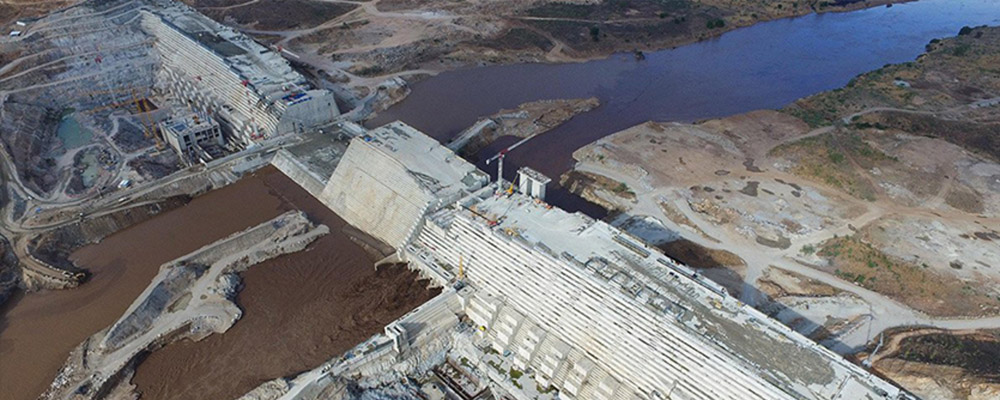The three nations agreed, following a meeting in Washington DC, that the mega dam on the River Nile should be filled in stages during the rainy season.
Ethiopia, which is building the dam, wants to start generating electricity as soon as possible.
But Egypt is concerned about its water supplies if it is filled too fast.
The preliminary agreement, brokered by US treasury secretary and the World Bank president, is short on details, says the BBC’s Emmanuel Igunza.
Some delicate negotiations will be needed before the Grand Renaissance Dam agreement is finalised later this month, he says.
Is this a breakthrough?
Negotiators are presenting this as a win-win for both Egypt and Ethiopia. There have been fears the countries could be drawn into war if it is unresolved.
According to the joint statement, filling the dam in stages during the July and August wet season will allow for Ethiopia’s “early generation of electricity” while “providing appropriate mitigation measures for Egypt and Sudan in case of severe droughts”.
Ethiopia, which began construction of the $4bn (£3bn) dam in 2011 on the Blue Nile, a tributary that contributes 85% of the Nile waters, has always said it wants the dam to be filled within six years.
Egypt has maintained that a longer period – of between 10 and 21 years – would be better so that the water flow is not drastically reduced.
No time period is specified in the preliminary agreement.
What happens next?
The dam is already 80% complete, and it looks like Ethiopia will start filling it according to the schedule it has always planned.
The final deal is expected to be signed on 28-29 January, when foreign and water ministers from the three countries meet again in the US capital.
It is hoped they can sell the final text to their governments to end the tensions.
But the main question is whether Egypt will be satisfied with the guarantees given by Ethiopia on the amount of water to be released during periods of drought.
The deal may also have a bearing on how the other eight countries on the Nile Basin choose to exploit the River Nile in the future.
How dependent is Egypt on the Nile?
Very. Most of Egypt is arid with almost no rainfall and relies on the Nile for 90% of its water.
Africa’s longest river flows through the city of Aswan around 920km (570 miles) south of the capital Cairo.
One of the North African country’s other main concerns is that if the water flow drops, it could affect Lake Nasser, the reservoir behind Egypt’s Aswan Dam, which produces most of Egypt’s electricity.
So these negotiations over the future of the Nile River’s waters are considered a matter of survival for millions of Egyptians.
What is at stake for Ethiopia?
Ethiopia considers the dam a matter of sovereignty and has been critical of what it believes is foreign interference in the matter.
It started building its dam at the start of the Arab Spring in March 2011 without consulting Egypt.
It refused to be bound a 1929 treaty that gave Egypt and Sudan rights to almost all the Nile’s water without considering upstream countries.
The dam, with a capacity to generate a massive 6,000 MW of electricity, is at the heart of the country’s manufacturing and industrial dreams.
Ethiopia has an acute shortage of electricity, with 65% of its population not connected to the grid.
The energy generated will be enough to have its citizens connected and sell the surplus power to neighbouring countries, including Sudan, South Sudan, Kenya, Djibouti and Eritrea.
Source : BBC





